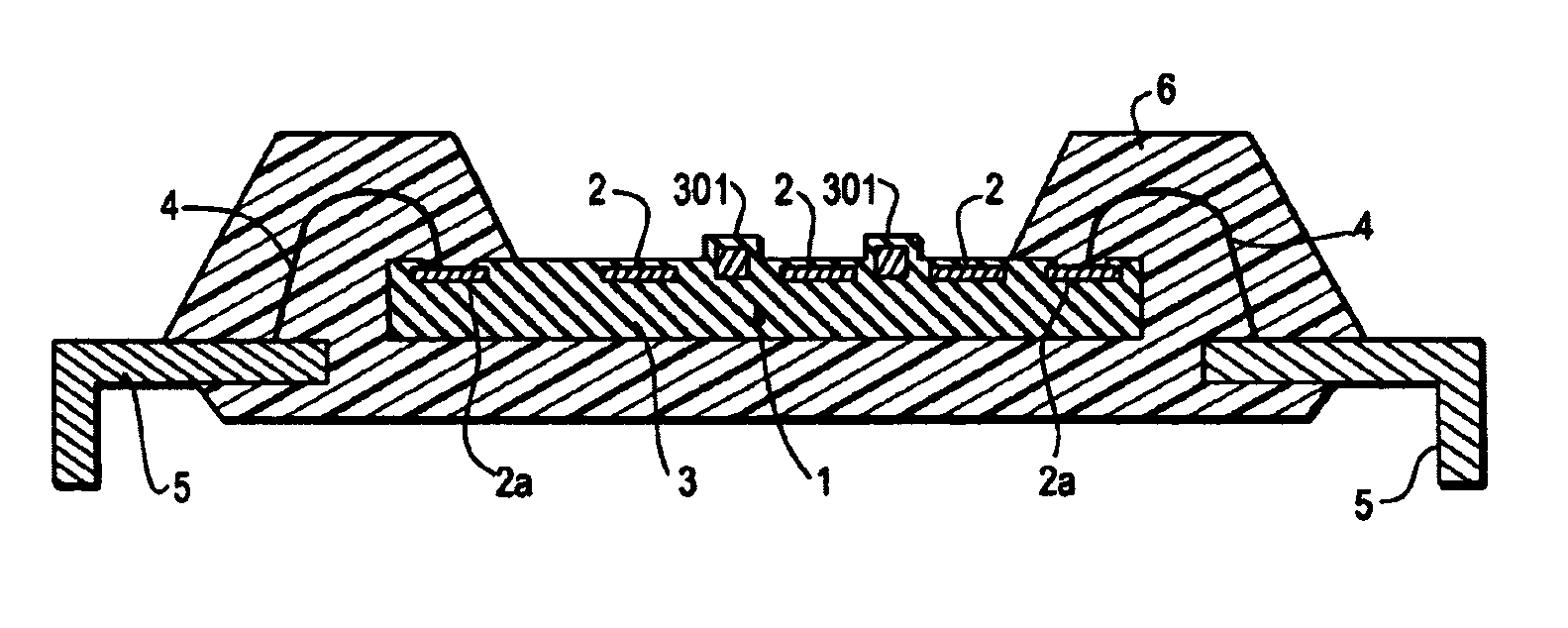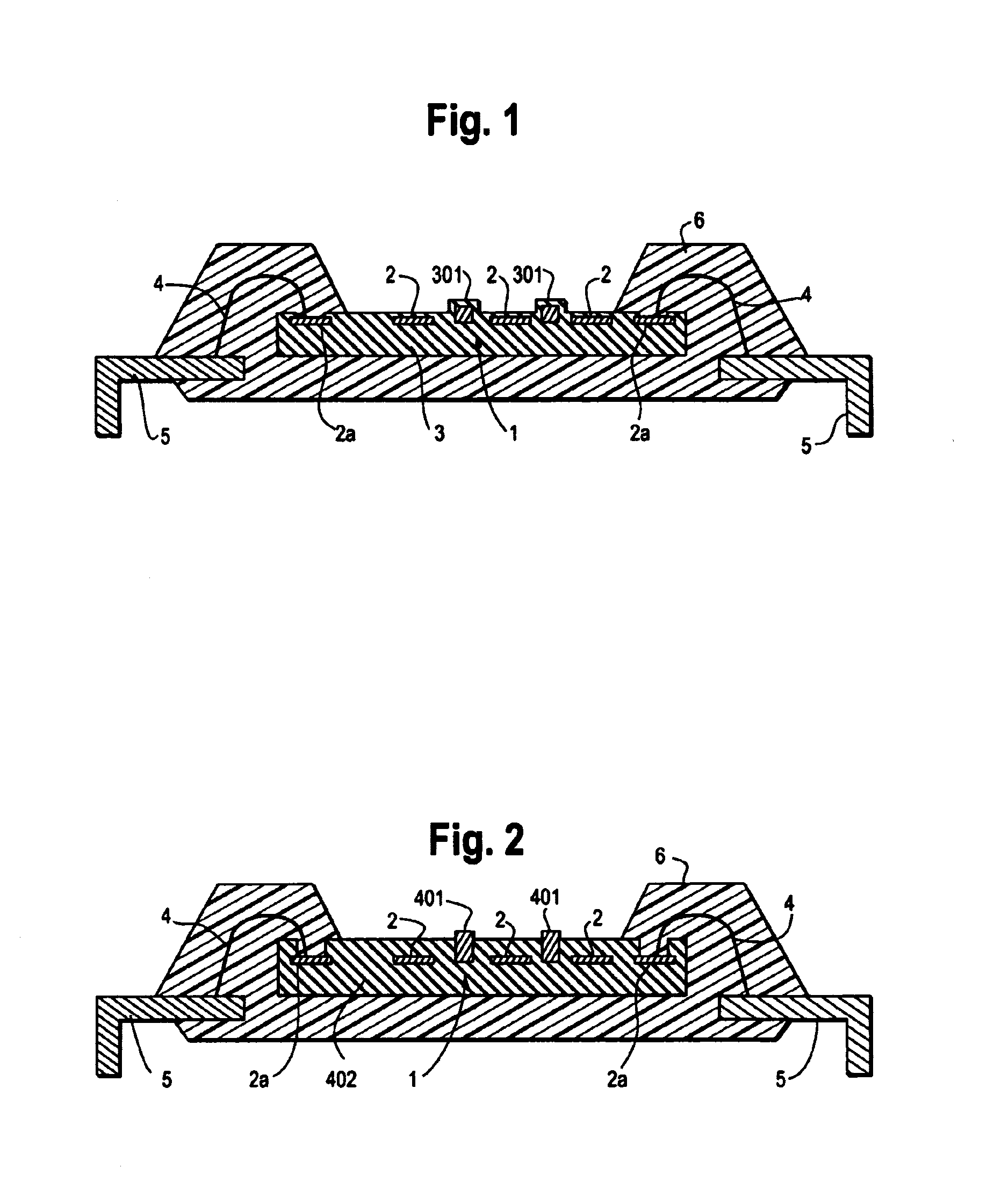Semiconductor apparatus for fingerprint recognition
a technology of semiconductor apparatus and fingerprint recognition, applied in the field of semiconductor apparatus, can solve the problems of circuit damage and loss of function of semiconductor apparatus for fingerprint recognition
- Summary
- Abstract
- Description
- Claims
- Application Information
AI Technical Summary
Benefits of technology
Problems solved by technology
Method used
Image
Examples
first embodiment
[0047]With respect to the semiconductor apparatus for fingerprint recognition which is operated as mentioned above, the present invention is described with reference to FIG. 1.
[0048]FIG. 1 is a diagrammatic cross-sectional view of a semiconductor apparatus for fingerprint recognition according to the first embodiment of the present invention, which constitutes a capacitive mode fingerprint sensor.
[0049]In the present embodiment, a wiring 301 for drawing static electricity (hereinafter, frequently referred to as “static-electricity drawing wiring 301”) having a thickness larger than that of an electrode 2 is formed along the line in the longitudinal direction of the electrode 2 (so that the lower surfaces of the wiring 301 and the electrode 2 are aligned in this example). The static-electricity drawing wiring 301 is formed electrically independently from the electrode 2.
[0050]An insulating protecting film 3, such as a passivation film, is formed so as to cover the electrodes 2, the s...
second embodiment
[0061]Next, the present invention is described with reference to FIG. 2.
[0062]The function as a semiconductor device for fingerprint recognition of the second embodiment is the same as that of the above-mentioned first embodiment, and therefore, only the wiring for drawing static electricity, which is a characteristic feature of the present invention, is described below.
[0063]In the present embodiment, a wiring 401 for drawing static electricity (hereinafter, frequently referred to as “static-electricity drawing wiring 401”) having a thickness larger than that of an electrode 2 is formed along the line in the longitudinal direction of the electrode 2 (so that the lower surfaces of the wire 401 and the electrode 2 are aligned in this example). The static-electricity drawing wiring 401 is formed electrically independently from the electrode 2.
[0064]An insulating protecting film 402, such as a passivation film, is formed so as to cover both of the electrode 2 and a pad electrode 2a, an...
third embodiment
[0074]Next, the present invention is described with reference to FIG. 3.
[0075]The function as a semiconductor apparatus for fingerprint recognition of the third embodiment is the same as that of the above-mentioned first embodiment, and therefore, only the wiring for drawing static electricity, which is a characteristic feature of the present invention, is described below.
[0076]In the present embodiment, a wiring 501 for drawing static electricity (hereinafter, frequently referred to as “static-electricity drawing wiring 501”) having a thickness larger than that of an electrode 2 is formed along the line in the longitudinal direction of the electrode 2 (so that the lower surfaces of the wiring 501 and the electrode 2 are aligned in this example). The static-electricity drawing wiring 501 is formed electrically independently from the electrode 2.
[0077]An insulating protecting film 502, such as a passivation film, is formed so as to cover both of the electrode 2 and a pad electrode 2a...
PUM
 Login to View More
Login to View More Abstract
Description
Claims
Application Information
 Login to View More
Login to View More - R&D
- Intellectual Property
- Life Sciences
- Materials
- Tech Scout
- Unparalleled Data Quality
- Higher Quality Content
- 60% Fewer Hallucinations
Browse by: Latest US Patents, China's latest patents, Technical Efficacy Thesaurus, Application Domain, Technology Topic, Popular Technical Reports.
© 2025 PatSnap. All rights reserved.Legal|Privacy policy|Modern Slavery Act Transparency Statement|Sitemap|About US| Contact US: help@patsnap.com



